Introduction
Corso Italia in Cortina d'Ampezzo is the most famous pedestrian street in the Dolomites and a meeting point for both residents and guests of Cortina. Let's discover together the points of interest, as well as some curiosities, about the town center and the historic buildings of Cortina.
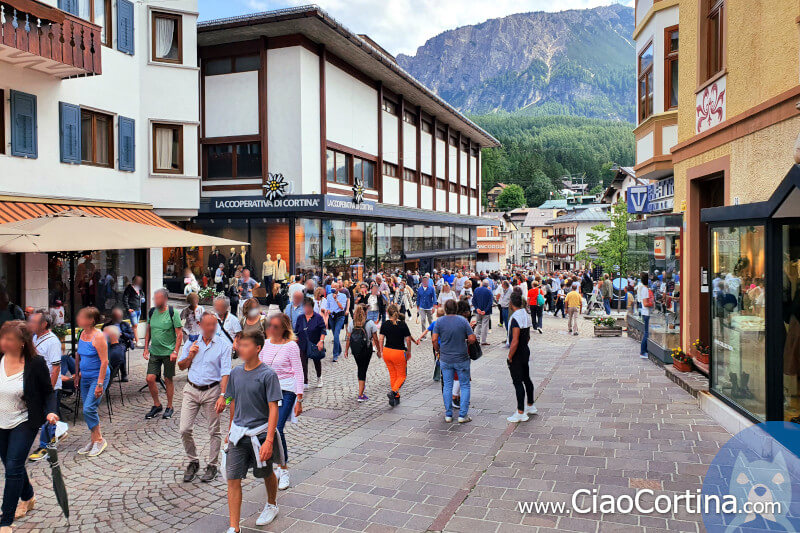
The bell tower
Let's start our walk from the Bell Tower of Cortina d'Ampezzo, an undisputed symbol of the town and a landmark visible from almost all the valley.
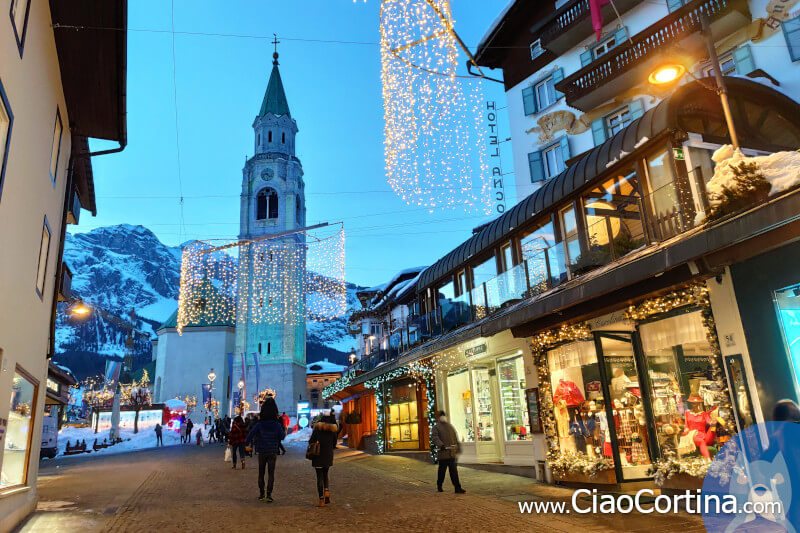
Located right in the middle of "Corso Italia", the seventy meters, two hundred feet, bell tower stands out in all its majestic splendor. Built in Byzantine style, it was erected between 1852 and 1858 by the Ampezzo architect Silvestro Franceschi to replace the previous tower dating back to 1590.
The bells of the Cortina bell tower were custom-made by the Grassmayr company of Innsbruck and are famous for their mesmerizing concert.
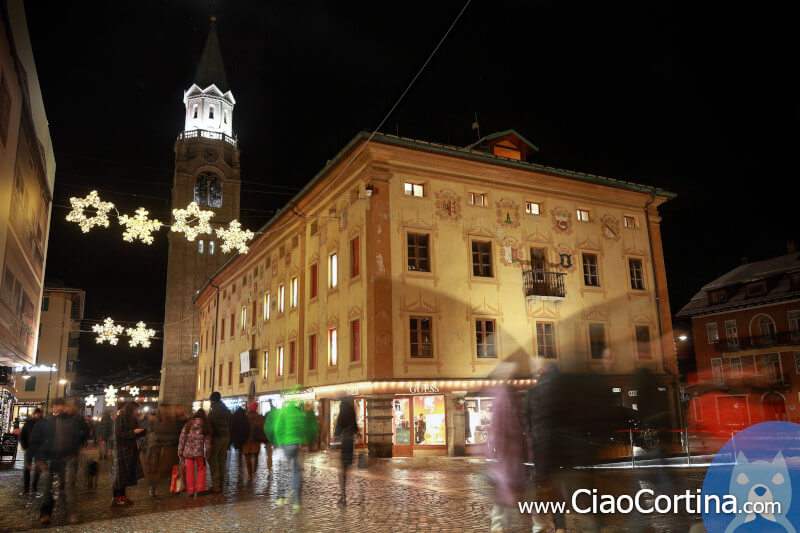
It is well known that, in 1917, Emperor Charles of Austria, after hearing them ringing, was so impressed by them that he forbade their fusion to make cannons. In memory of this event, you can find a commemorative plaque on the entrance door of the bell tower, which actually is closed to the public. If you happen to hear them ringing, pause for a moment to listen to the splendid tolling.
The bell tower is made entirely of Dolomite stone, the same stone of which the Dolomites are composed. The stones were collected in a quarry in Cortina, at the foot of Mount Faloria.
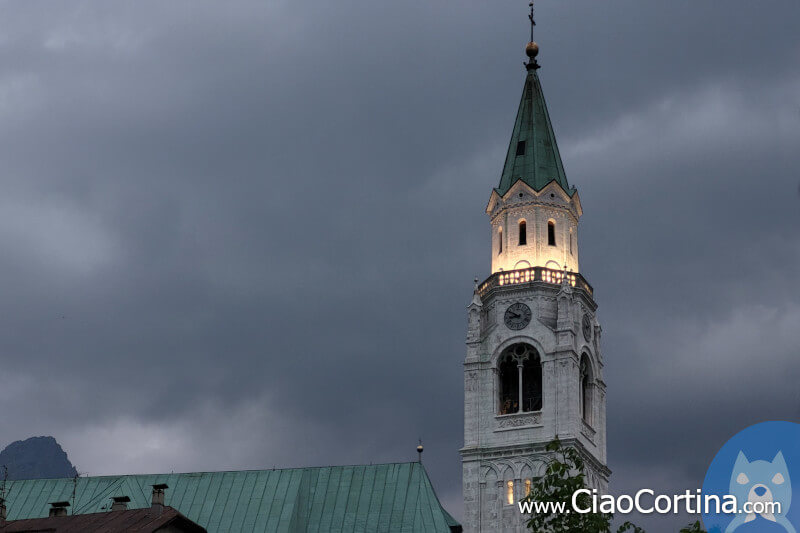
It is estimated that the bell tower cost about 200,000 thousand florins, equivalent to about five million euros today. If you want to know more about the history of the bell tower of Cortina, you may read the article below:
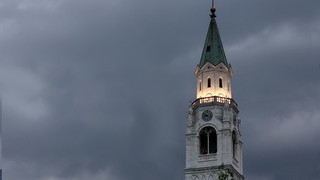

Basilica of Saints Filippo and Giacomo
Close to the Bell Tower there is the Church of Cortina is the center of the religious life of the town. In 2011 the church was promoted to minor Basilica.
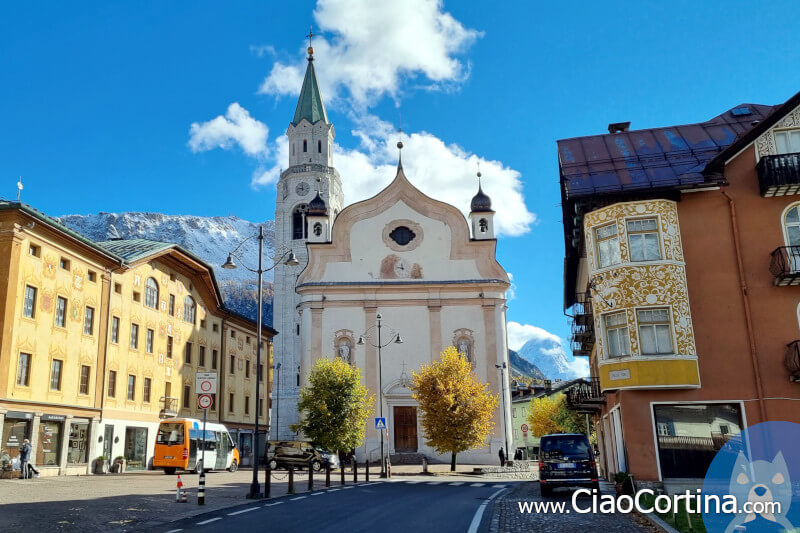
Built in 1769 on the foundations of two previous churches (of the XIII and XVI centuries), it contains some of the most significant artworks of the Christianity of Cortina. The church is dedicated to the patron saints Philip and James (Filippo e Giacomo in Italian). The relics of the two saints are visible on the niches on both sides of its eighteenth-century style single nave.
Inside the Basilica it is possible to observe the paintings of Giuseppe Ghedina, a local and prolific artist of 1800: He is also the author of the frescoes of the "Ciasa dei pupe", of which we will speak later. in this article.
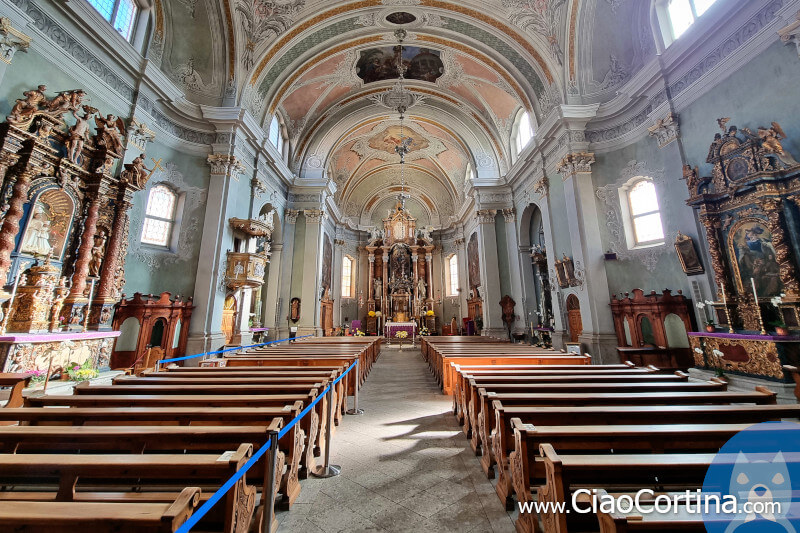
The high altar, in marbled wood, was made by Johannes Mussack and painted by Antonio Zanchi, while the decorations of the vault of the nave were made by Franz Anton Zeiller.
Before exiting through the main door, look up, to admire the organ from 1954, an instrument with 3078 pipes built by the Mauracher company from Linz.
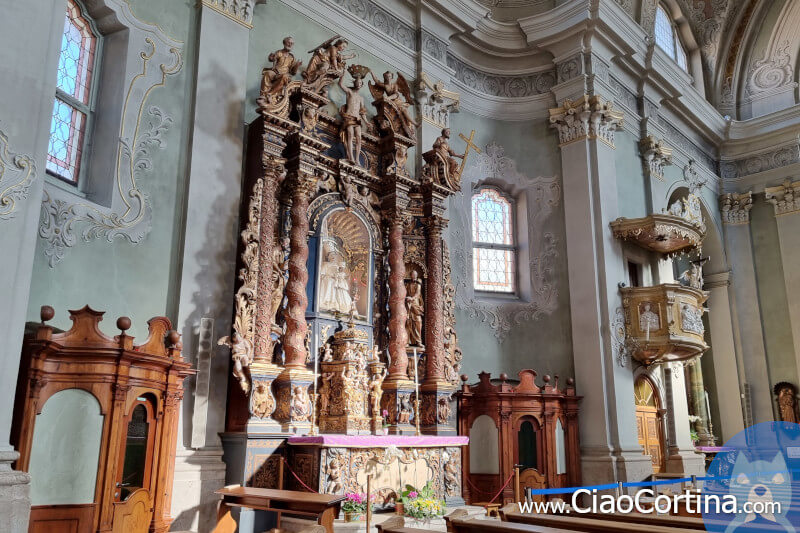
A curiosity: if you look at the fresco at the right of the altar, you can see a representation of Cortina, drawn below the patron saint.
"El Comun Vecio"
In front of the church you can see a large yellow building: "El Comun Vecio" that means The old town hall of Cortina in the local dialect. Nowadays the building is assigned to other purposes.
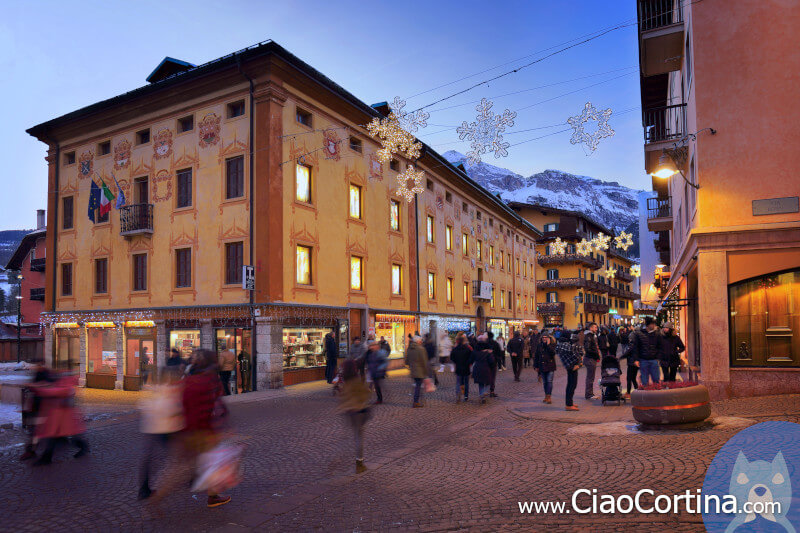
In the old days, in its rooms, the meetings of the municipality, school classes and even trials were held. There was also a prison and a grain and salt warehouse. In 1850 the building ran the risk of being demolished to create a square, in order to give greater presence to the church, but fortunately it has resisted until today.
Nowadays in the old town hall you can find the tourist information office, which you could find really useful, the civic library, "Ra Banda de Cortina" (the marching band of Cortina) as well as some offices and stores.
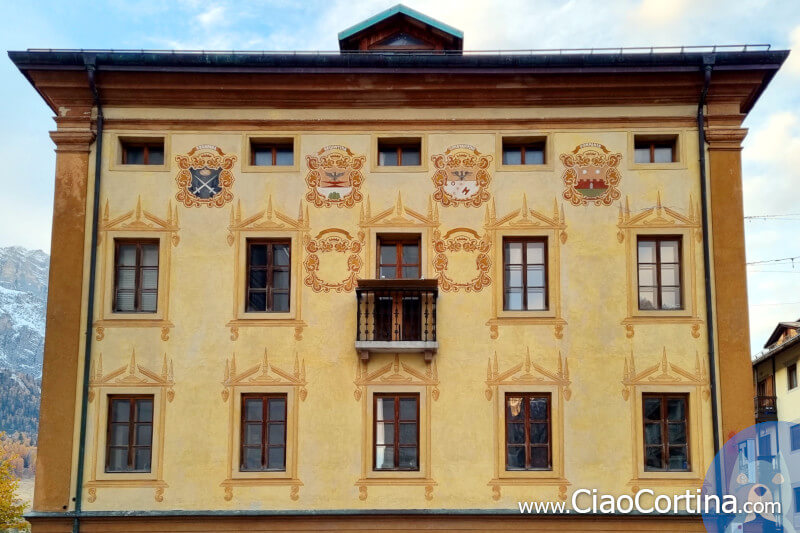
The square in front of the town hall is called Piazza Roma, and it's the main bus stop for all city buses.
On its facades are decorated several heraldic coats of arms that have been drawn in the late '20s of the 1900. Every one represents an original family of the "Ampezzo", and the names are strictly written in dialect.
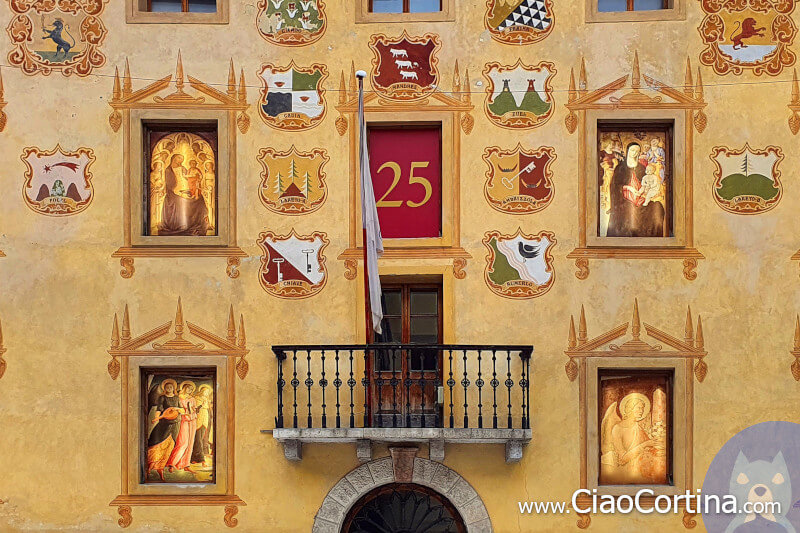
A curiosity: the family name is not the surname, but the name of the lineage. You can have the same surname, but a different family name. I'm not sure if this is common in the whole of Italy or only in the surroundings, but in Cortina it is considered normal to name someone with his name and the family name, completely ignoring the anagraphic surname that is implied in the family name.
Let's make an example: Anagraphic name "John Shepard" of the family of "the Cows" would be called "John Cow" because, if he is a "Cow" it's implied that his legal name is "Shepard".
If you come to Cortina during the month of December, you'll see a picturesque advent calendar made by lighting up, day after day, the twenty-five windows of the facade that looks towards Corso Italia. The "advent calendar" is a christian tradition: it is, simplifying, a "countdown to christmas" that starts the first day of December.

Angelo Dibona Square
Let's move a few meters south, towards "Angelo Dibona" square is the central square of Cortina, where most of the public events and few concerts take place. Thanks to a removable structure, called "the seashell" the events can have protection from the sun or the rain, giving also a beautiful scenography.
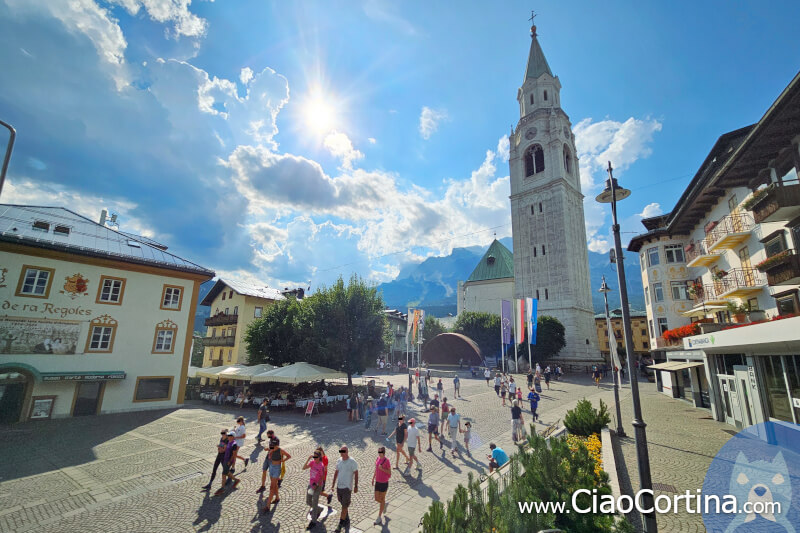
The square was known as Venice square, but recently it has been named after the famous mountaineer Angelo Dibona, of whom you can see a bronze bust, made by the artist Murer in 1976, on the side that faces "Corso Italia".
Angelo Dibona square offers a beautiful view of Corso Italia, the bell tower and Mount Tofana, and is one of the most photographed places of "Corso Italia", with the unfailing selfie under the Bell Tower.
... many events are organized in this central meeting point of Cortina...
If you are lucky enough to be in Cortina during the countryside festival, the first Sunday of July, or during the Musical bands festival, the last week of August, you'll see the square crowded with people celebrating. During the year there are also other events that are organized in this central meeting point of Cortina.
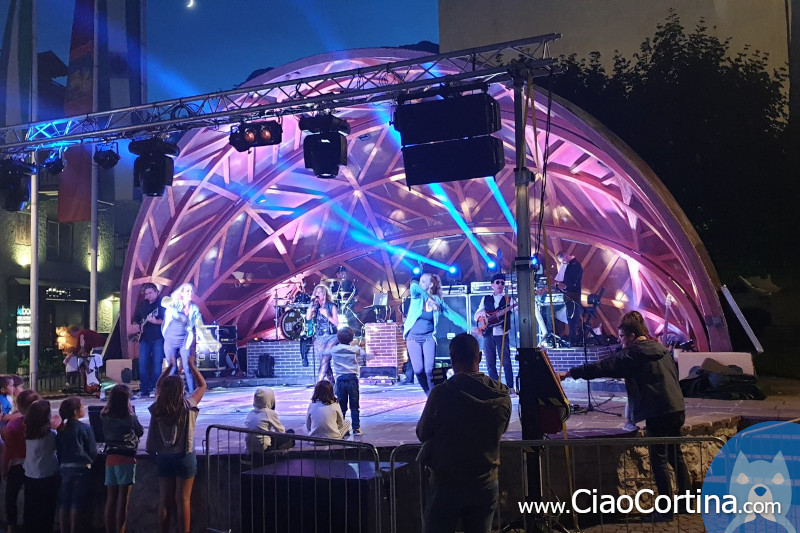
In addition to the statue of Angelo Dibona, since December 2015, the square has been decorated with the monument to the mountain policeman. It is a bronze bust dedicated to the police forces that ensure safety and legality in the touristic villages among the mountains of the whole Italy. The sculpture, created by artist Beppino Lorenzet, was placed on a rock that has been taken from the Acquabona landslide, which caused the death of three people in 2015.
Immediately behind the statue there is Cortina Bank, one of the oldest cooperative credit banks in Italy, which houses the fresco of the "Sibyls", a painting dating back to the first half of the 1400s, recovered in 1893 during a restoration of the building. It is an interesting fresco because, despite the fact that Cortina at the time was under the Austro-Hungarian Empire, Giotto's style identifies the Italian artistic identity of Cortina.
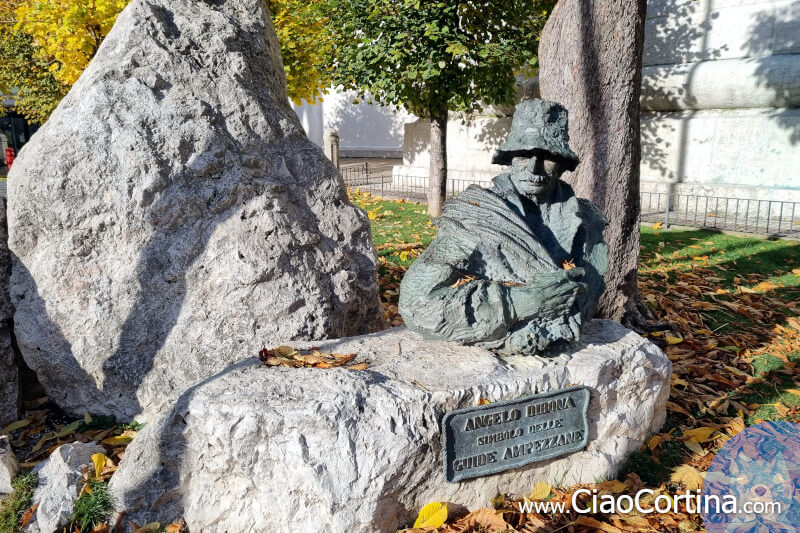
Do you want to know a curious story about Piazza Dibona? It seems that in June 2012 two tourists from Milan saw the ghost of a German airplane pilot that was crossing the square before disappearing. The fact ended up in some newspapers and created a bit of an uproar. Obviously there have been no more sightings.
To give a little "credibility" to the story, here you can read an Italian article, appeared in a respectable newspaper, but it's very likely that this was just a funny marketing operation.
"Ra Ciasa de ra Regoles"
Just below Angelo Dibona Square, to the south, there is a large building, marked by a sign, strictly in dialect, which reads "Ciasa de ra Regoles". It is translated as The house of the "Regole" and it is the administrative headquarter of the "Regole d'Ampezzo".
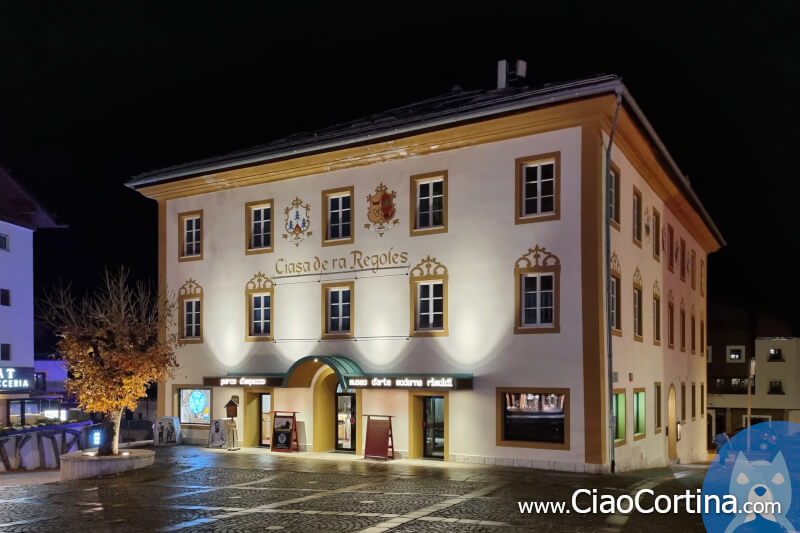
The "Regole" are a centenary old Ampezzo institution for the protection and regulation of the territory. Their main purposes are management of collective properties such as forests, pastures and alpine hut, management of the nature park, and maintenance and protection of the Ampean territory.
The "Ciasa de ra Regoles" is one of the most important civil buildings in Cortina d'Ampezzo. Originally designated as a municipal school, since 1957 it has become the headquarters of the "Regole of Ampezzo". The building is made in the classic Austrian style of 1800, further emphasized by the 2019 restoration, which restored it to its original splendor.
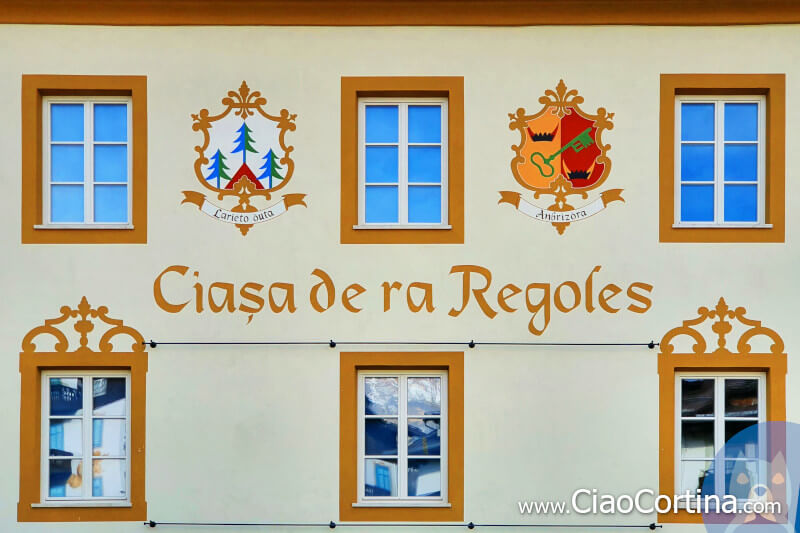
The building is characterized by a hipped roof with a shaped cornice. A peculiarity that might go unnoticed is the absence of balconies, a typical trait of Austrian buildings of that period. The windows are decorated and the facades of the building are colored in a tint very similar to that of the "Comun vecio", the old town hall which we mentioned earlier.
On the ground floor of the "Ciasa de ra Regoles" it is possible to visit the Museum of Modern Art Mario Rimoldi, one of the most important private collections of modern art in Italy. There are displayed works by artists such as De Chirico, Morandi, Martini and Rotella, donated to the "Regole" in 1974 by the widow of Mario Rimoldi, a well-known art collector and patron of Cortina.
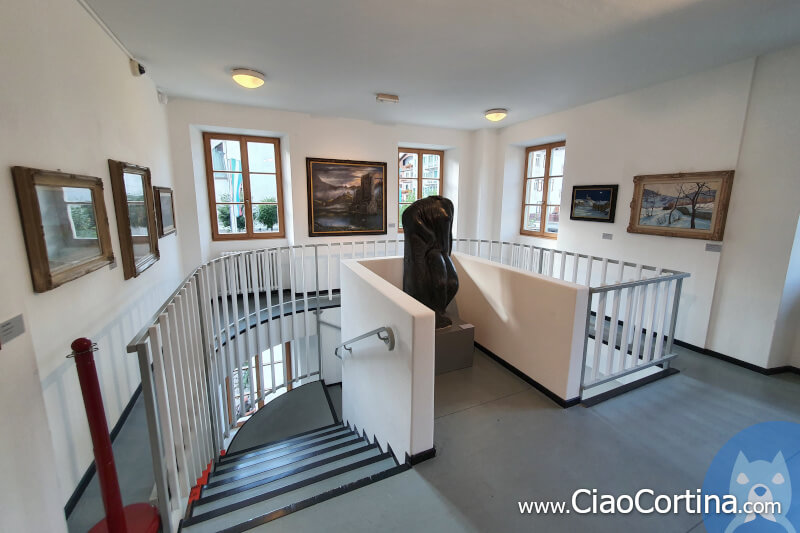
In the past, the palace also housed both the Regole d'Ampezzo Ethnographic Museum and the Rinaldo Zardini Paleontological Museum, which have now been transferred to the Alexander Girardi Hall, a building that is easily reachable thanks to its short distance from the center. We'll talk about it later on this page.
If you want to have more information on the Modern Art Museum, we have written an in-depth article, which you can read by clicking below:
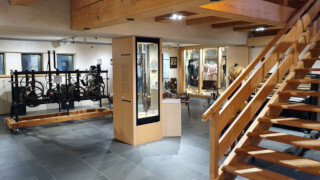

Corazza's house
To the left of the "Ciasa de ra Regoles" there's a small road that descends towards a small parking lot. As you walk it, you will clearly see a yellow building, an old Ampezzo house, with a clock and an inscription: "Corazza" and "Ampezzo" on the facade. It is Corazza's house, an ancient building, that is private, and can be visited only from the outside.
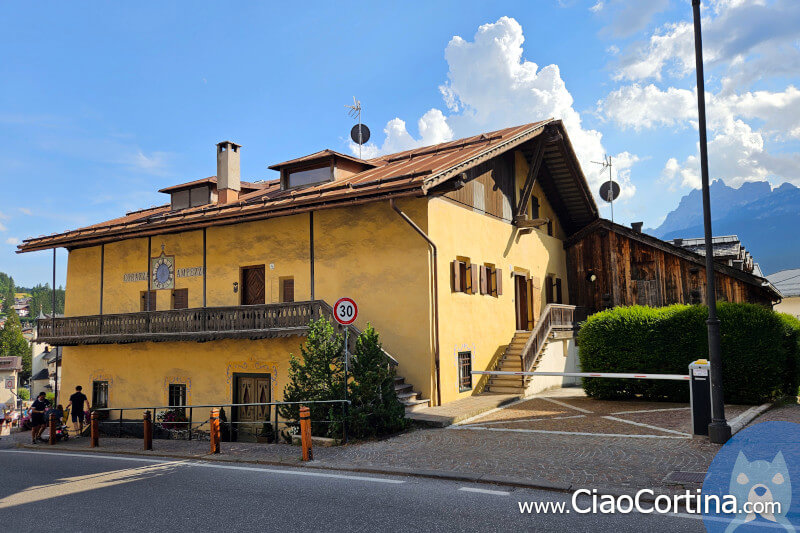
The property was historically inhabited by a family of watchmakers and is one of the oldest buildings in Cortina, dated between 1400 and 1500. The family that lived in this house was called "Corazza", that means "Armor" in Italian. The name comes from the fact that the family was originally specialized in the construction of armors and in the art of wrought iron. Later they specialized in the more complex art of clock making. This is the reason for the clock on the facade.
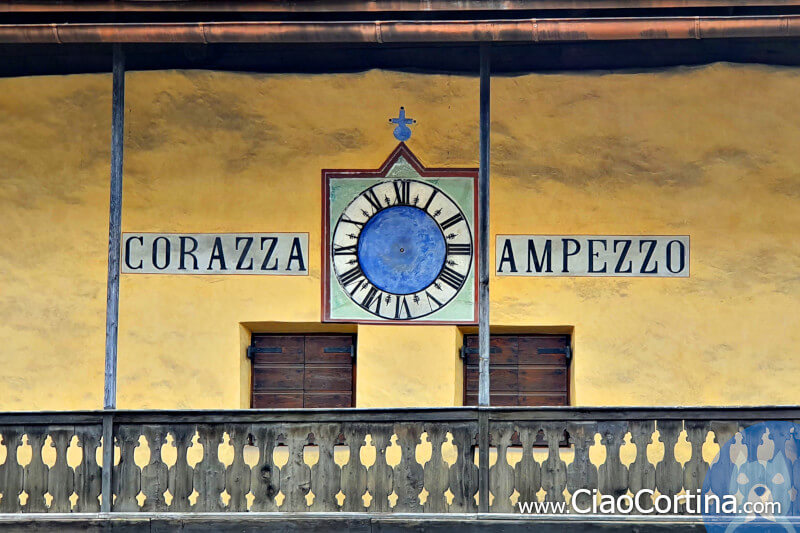
If you pay attention to the architecture of the building, you can observe the characteristics of the traditional mountain house: thick walls made of stone, with asymmetrical and very small windows, to keep the cold outside.
St. Francis Church
After visiting Corazza house, go down "via Difesa" until you reach the Little Church of "San Francesco". This small chapel is one of the oldest in Cortina. The first document mentioning it is dated 1396, but the church was probably already there. Unlike the other churches in Cortina, the Little Church of "San Francesco" is private and belongs to the Constantini family. They made a two years restoration in 2022, thanks to the sale of some advertising space on the scaffolding of the restoration.
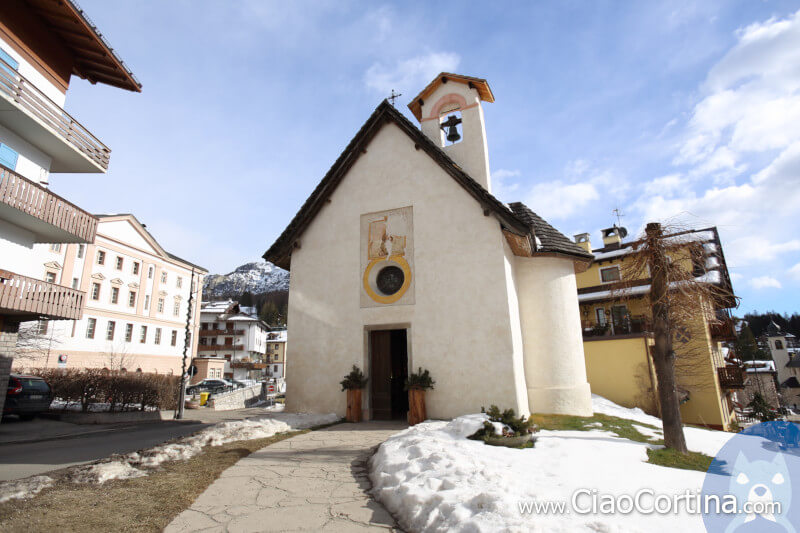
Inside the little church you can see some fascinating 14th-century frescoes representing St. Bartholomew, St. Matthias and St. Jude Thaddeus. In 1913 a little grotto was built, to host a statue of the Virgin Mary, from the Gardena school.
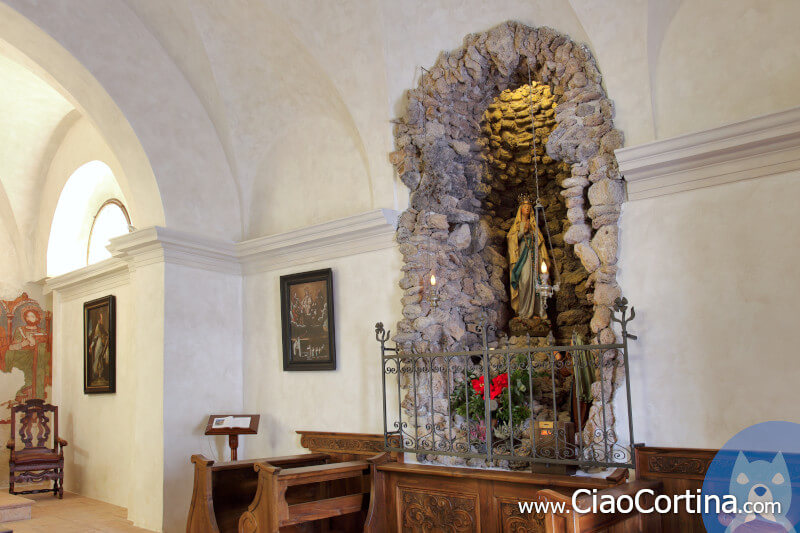
Outside the church, over the door, you can see a very interesting fresco. It is a representation of San Francesco, but the painting is partially ruined, due to a lightning strike that struck the building in 1718. After this incident, the fresco was covered, but the conservative restoration has brought it back to light, removing five centimeters of plaster that had accumulated over the centuries.
The "Cooperativa" of Cortina
Let's go back to Corso Italia, turn right and walk a few meters, until we reach the "Cooperativa" of Cortina, a place that must be seen, because coming to Cortina without visiting "La Cooperativa" is like going to Rome and not seeing the Colosseum.
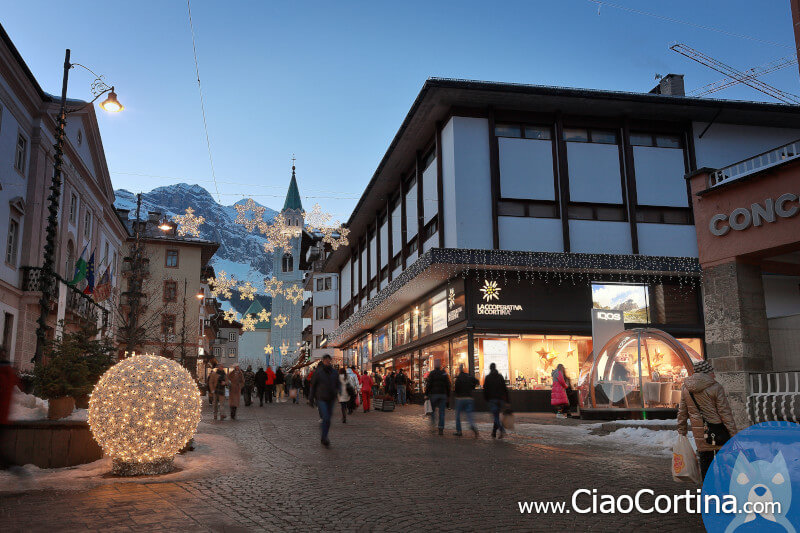
It was founded in 1893 as a warehouse for basic necessities, but thanks to the commitment of the 25 founding members, it soon became a landmark and gathering place for the whole town. To date, the "Cooperativa" has a display area of 4,000 sqm, as well as six other stores along Corso Italia.
... became a landmark and gathering place for the whole town...
It is built on three floors, where you can find a huge selection of products, from groceries to hardware, from shoes to clothing. In addition to being a well-known meeting place, it is a very well-stocked store, with many of the most prestigious brands of each different sector.
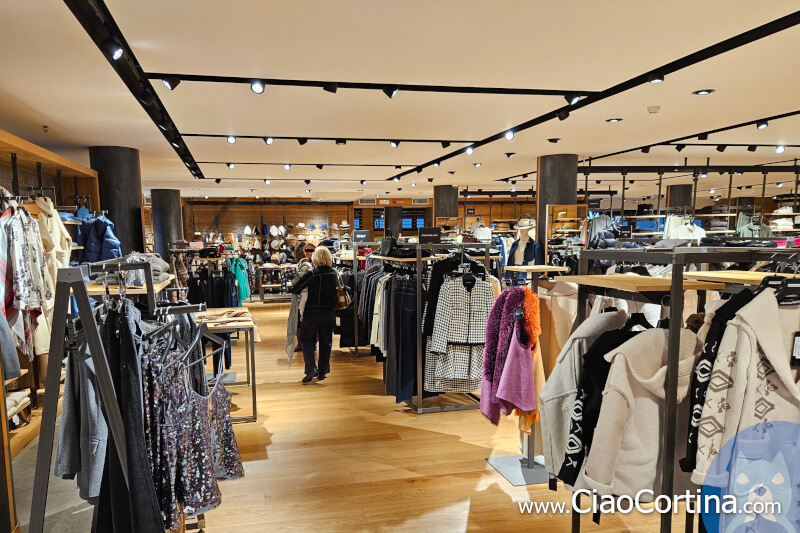
Doubtless, when the sun goes down or if the day is rainy, it is the place to go to spend a few hours, any time of the year. If you are curious, here you can see the official website of the "Cooperativa" of Cortina.

Cortina's Town Hall
When you'll leave the "Cooperativa", in front of you, will stand the Town Hall of Cortina, the next stop of our journey to discover "Corso Italia", in Cortina. The Town Hall was built in 1836 and is the administrative headquarters of the town. It also houses the headquarters of the "ULdA", the Union of Ladins of Ampezzo. This association sets up a nice showcase with curiosities and topics of interest from Ampezzo life, such as ancient crafts or festivities. If you want to see it, it is to the left of the entrance door to the municipality.
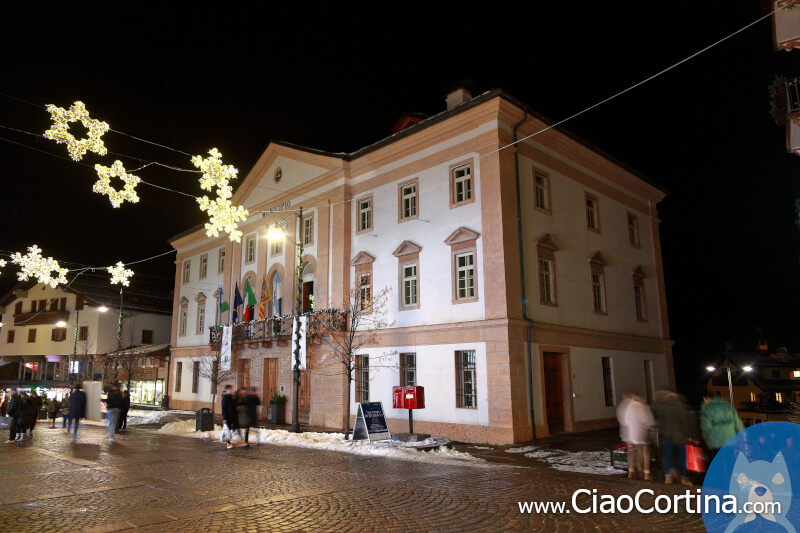
Once you enter the main gate you will see two cannons on display. These pieces of artillery belonged to the Venetian fortress of "Palmanova" and were gifted to the Ampezzo community by the Field Marshal Joseph Radetzky in 1851. They were supposed to be melted to make the bells of the Bell Tower, which was still under construction at the time.
... were gifted to the Ampezzo community by the Field Marshal Joseph Radetzky...
Given the perfect condition of the cannons, it was decided to keep them intact so that they could be used as weapons in case of need. Fortunately, in their lifetime, they only ever fired blanks.
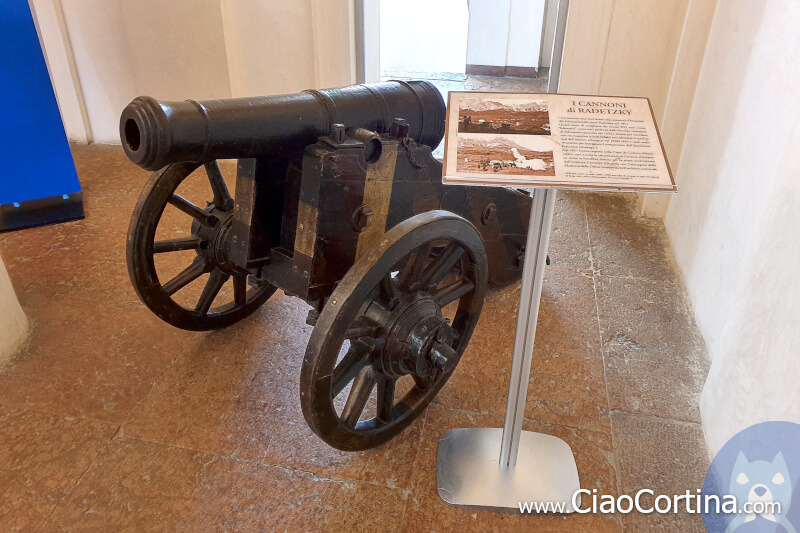
If the name reminds you of anything, it is probably due to the famous Radetzky March, a military march, composed by Johann Baptist Strauss, in honor of the reconquest of Milan by the Austrians after the revolutionary uprisings of 1848. The march is really famous, and is often played by the Musical Band of Cortina d'Ampezzo. Every year, on the last Sunday of August, the "Festa delle Bande" takes place, it is a gathering of musical bands. At the end of the parade all the bands flow in Roma square and play some songs all together, a truly exciting experience. It has become a ritual to listen to the Radetzky's march played by thousands of instruments simultaneously, something you won't hear often in your life. If you want to know more about the Cortina Marching Band Festival and the final big concert, we invite you to read our article. You can see it below:
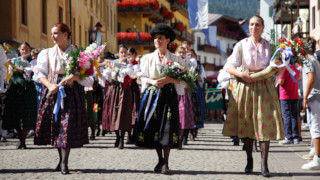
Former post office
Now let's retrace our steps and head towards "Largo delle Poste", where we'll be able to see the former Post Office Building of Gellner. Eduard Gellner was an architect mainly known for his design of the Eni Residential Village in Borca di Cadore. He achieved international fame thanks to some architectural works realized for the 1956 Winter Olympic Games in Cortina d'Ampezzo, among them the Telve Palace, generally called the former Post Office building.
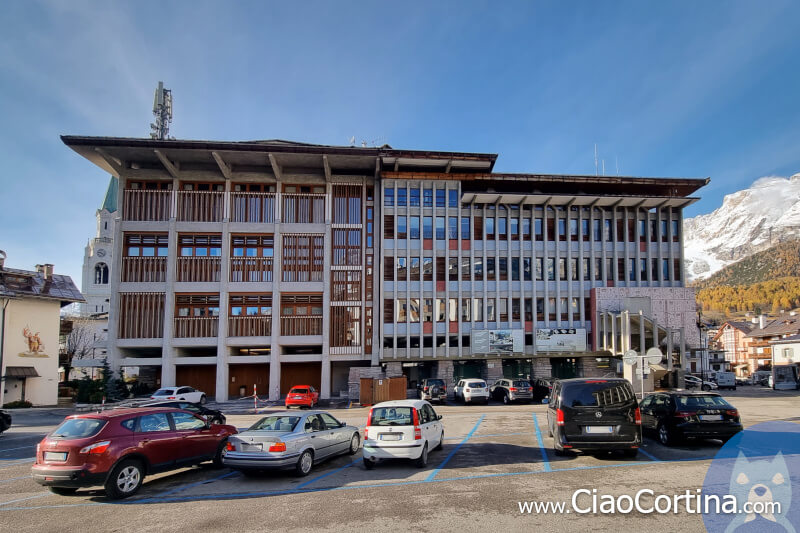
Gellner's style can be defined as "modern alpine architecture", but some of his works have become target of criticism because, in order to abolish the folklore and rusticism, the architect risked overdoing it, as he himself admitted in a 1973 conference in Vienna entitled "Architecture and Environment".
... abolish the folklore and rusticism...
Undoubtedly, the former Post Office Building is one of these works, where the desire for polemic against the rustic was expressed in a modern style that was outside the canons of the time. To better contextualize we must remember that it was the fifties, and in the middle of the post-war period the desire to create something new was strong, also thanks to innovative materials such as reinforced concrete.
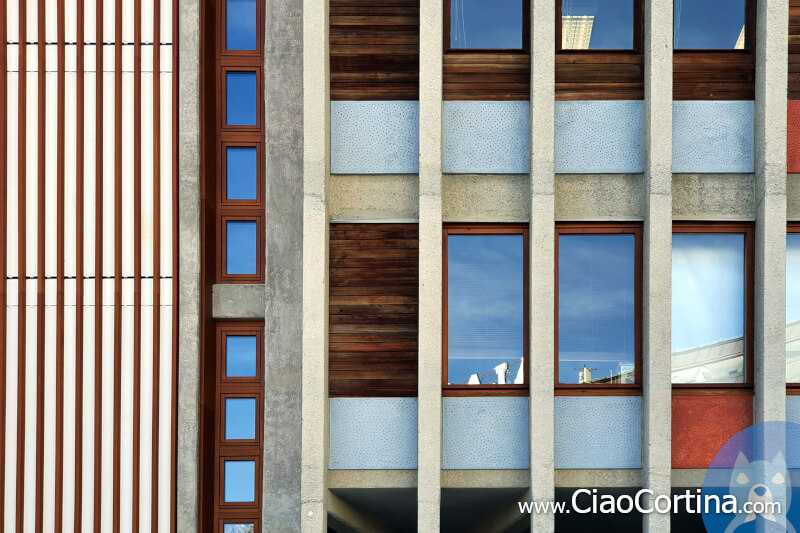
Even considering these facts, we can still say that the building doesn't go unnoticed. The alternation between reinforced concrete and wood, with some panels painted in blue and others in brick red, make it strongly recognizable.
Whether you like it or not is absolutely subjective, but it is undeniable that Telve building represents a strong piece of Italian architectural history and it is worth stopping to look at it, deciding for yourself whether it is to your taste or not.

"Ra Ciasa de i pùpe"
Now let's go back along Corso Italia, walking north, until we reach "Ra Ciàsa de i pupe". Written strictly in ladin dialect, it means "the house of the children". It is a building almost completely frescoed by the brothers Luigi, Angelo and Giuseppe Ghedina, whom we have mentioned before for the frescoes in the Basilica.
The building was originally a depandance of the "Aquila Nera" (black eagle) hotel, as can be seen by the inscription under the small balcony overlooking Corso Italia.
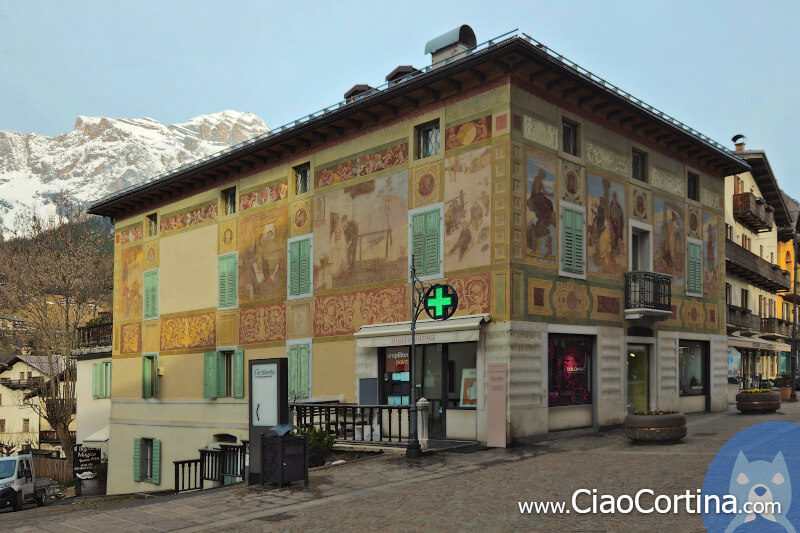
The three brothers were the sons of the owner of the hotel, and they painted the east facade with scenes representing arts and science, while the south facade was decorated with glimpses of Ampezzo life, represented with the four ages of man: childhood, adolescence, maturity and old age.
It is said that the white panel was deliberately left blank, available for anyone who wanted to challenge the talent of the Ghedina brothers in painting. In July 2022, a conservative restoration returned the palace's frescoes to their former glory.
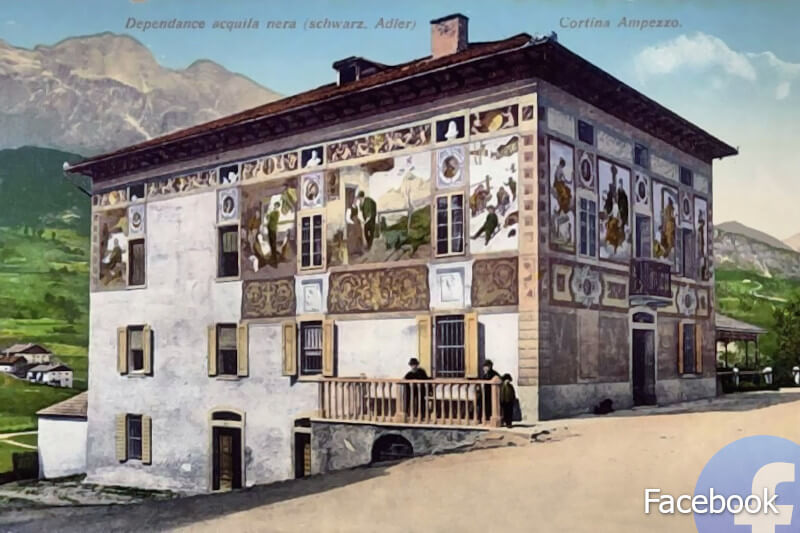
Actually the building cannot be visited inside, as the spaces originally intended for the hotel have been converted into apartments and stores.
Of the photographs proposed above, the most beautiful, in our opinion, is the vintage postcard, where you can clearly see the frescoes as they originally appeared. We want to thank the Facebook page C'era una volta a (once upon a time in Cortina) for allowing us to publish it.
The Ice Stadium
Even though it is not exactly located in Corso Italia, it seems appropriate to mention the Olympic Ice Stadium of Cortina. It was built for the VII Olympic Winter Games of 1956, which were hosted in Cortina d'Ampezzo. It was the first Olympic Winter Games in the world to be broadcast on television. The ice competitions and the opening and closing celebrations of the Olympic games were held there. The structure was built by the company "Viviani Donato and sons", from "Cornuda", in the province of "Treviso".
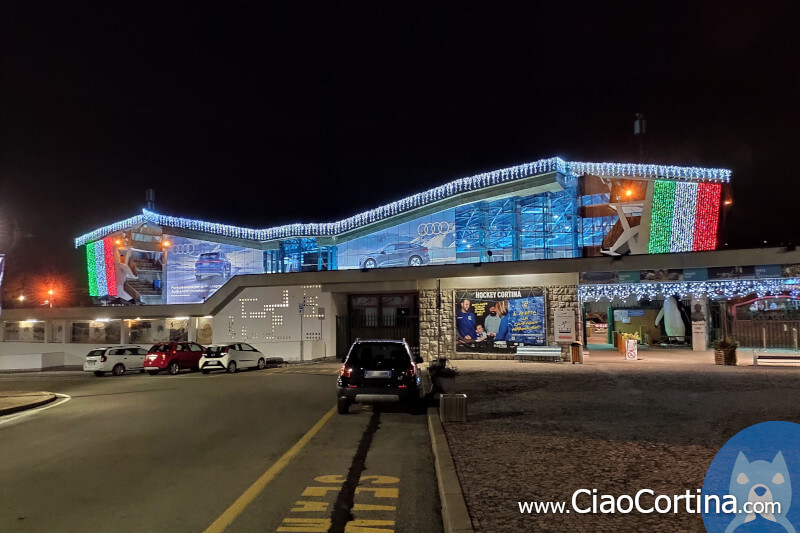
Originally, the stadium was open and could accommodate up to 12,000 people, but the costs of management for snow removal and new rules for major events on ice have forced the institution to cover the skating rink. After some controversy the company "Cimolai Armando" was commissioned to build a steel and glass roof in 2004, to ensure the usability of the facility even in summer or in bad weather conditions.
... at the moment the stadium has a capacity of 7000 spectators...
At the moment the stadium has a capacity of 7000 spectators and hosts the activities of the various ice sports societies, as well as an outdoor playground accessible in the summer. Outside the stadium you can see the Olympic brazier, placed on a wooden platform decorated with the five Olympic circles.
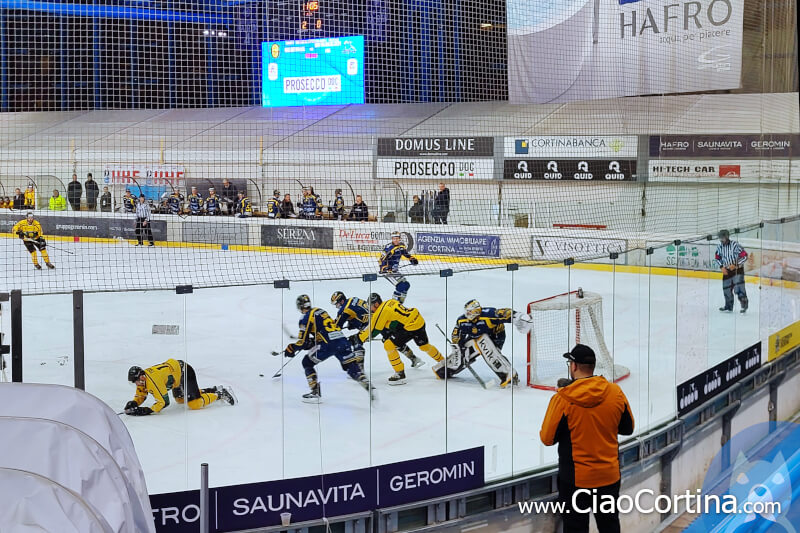
Before proceeding, a couple of curiosities:
- The stadium appeared in the film 007 - For Your Eyes Only in 1981, in the scene where James Bond meets Kristatos and his protégé, the skater Bibi.
- The engine room of the stadium is still the original one from 1952 and maintains the ice using fifty kilometers, thirty miles, of coils, placed a few centimeters below the rink.
At the beginning of the driveway, in front of the stadium, there is a large stone dedicated to "Déodat de Dolomieu". Déodat was a French scholar who published, in 1791, an article on a limestone rock, discovered in the Alps, and which has been named Dolomite in his honor.
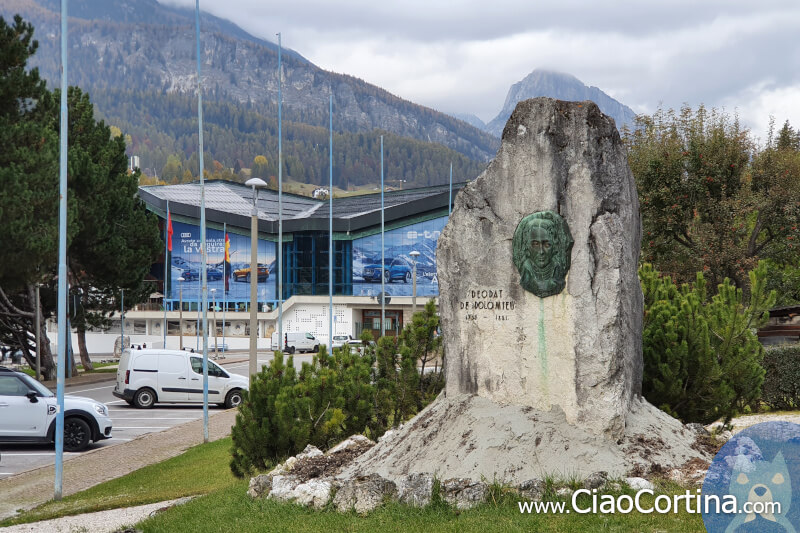
The Dolomites are so unique in their kind that they are considered a UNESCO World Natural Heritage Site, both for their beauty and for their geological characteristics.
If you are interest to know more about the Dolomites and their formation, we suggest you read our article about the geological history of the Dolomites you can find below:
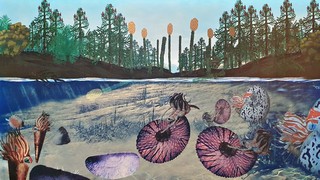

Alexander Girardi Hall
The Multipurpose Center Alexander Girardi Hall is a complex created combining tradition and public services. It was born in 2006 as a multipurpose hall and congress space with 634 seats. The inside can be organized for concerts, parties and conferences, or it can be used as a movie theater.
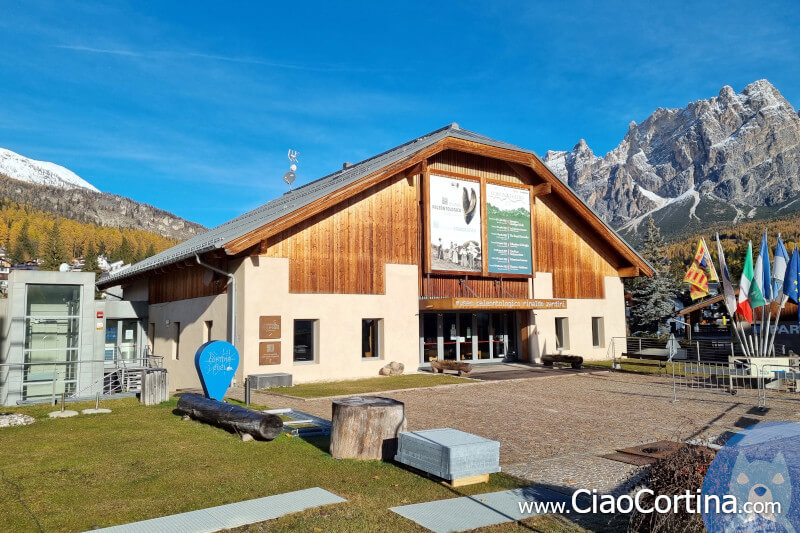
As mentioned earlier, the Alexander Girardi Hall hosts the two relocated Ampezzo's "Regole" Museum: The Ethnographic Museum "Regole d'Ampezzo" and the Paleontological Museum "Rinaldo Zardini".
The former has great historical value for the municipality of Cortina d'Ampezzo. It represents both the Ampezzo traditions and mountain life in those years.
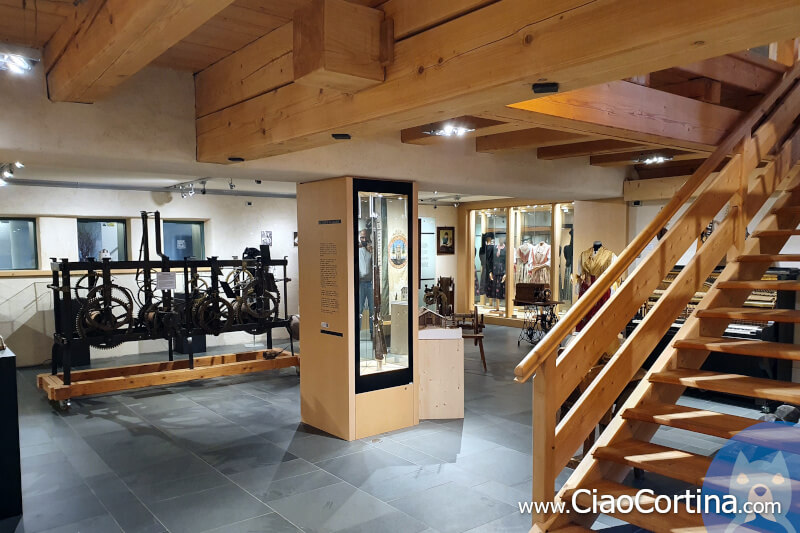
The latter is a tribute to Rinaldo Zardini, a famous paleontologist from Cortina known for having discovered thousands of fossils in the Cassian strata around Cortina. The fossil collection is one of the most complete in Europe and includes some specimens of amber that are millions of years old. Below you can find the link to our article:

The main hall was named after Alexander Girardi, an Austrian tenor born in 1850 to an Ampezzo father who emigrated to the town of Graz from Cortina d'Ampezzo. He performed several songs that made him famous in theaters in Vienna and Paris. He is buried in Vienna's central cemetery.
Shops and Pubs
Before concluding our article on what to see in Corso Italia in Cortina we'd like to return to the center of the town for a moment. "Corso Italia" is not only made up of historic buildings. Cortina is also famous for its fashion boutiques and for its pubs, restaurants and clubs, where you can have a drink after spending the day outdoors or eat something.
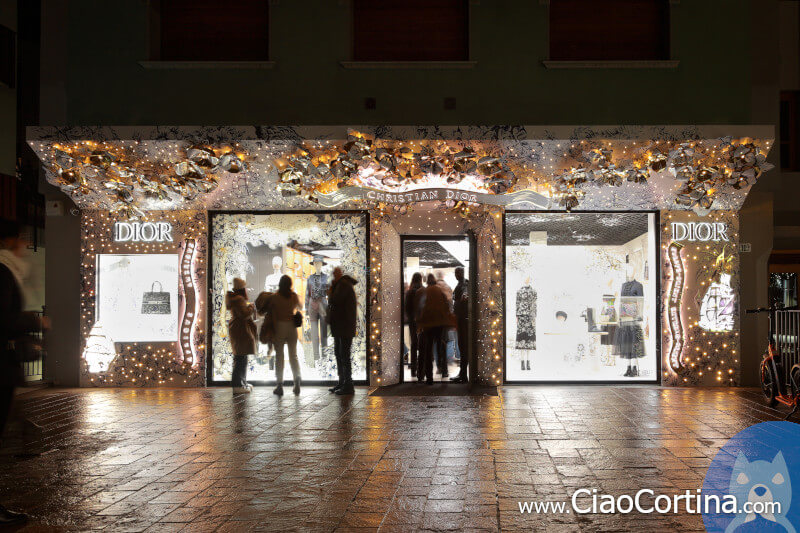
The purpose of this article is not to advertise anyone, nor to forget someone else, so please consider this a list, that we've made without thinking too much, of the places that we consider particularly interesting for those who visit Cortina.
It must also be said that this is a small town: if you walk along "Corso Italia", you'll see with your own eyes which shop or locations will catch your attention.
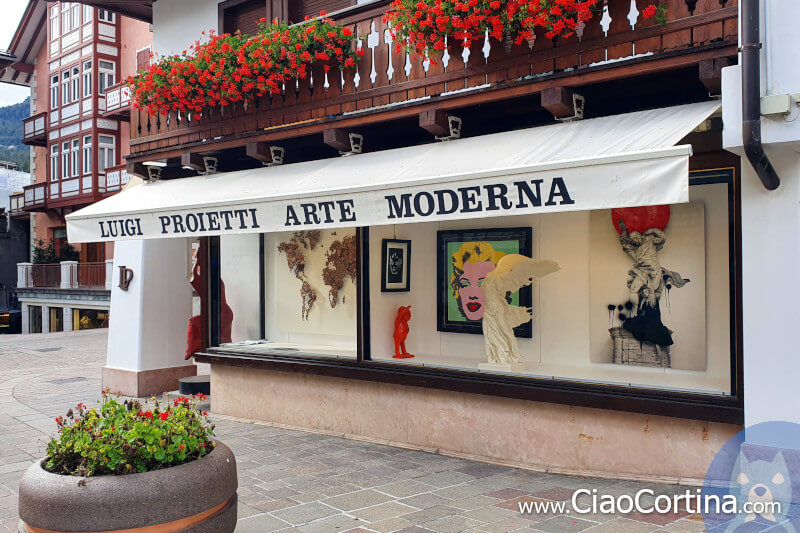
Many big brands have a window in Cortina, so you'll surely find some shops along the Corso where you can stop. At the moment the most popular boutiques are those of the great Italian fashion brands, such as Dior boutique, a pop-up store in collaboration with the historic Franz Kraler store. In addition to clothing shops, Cortina is also famous for its art galleries. Walking through the center, it is not difficult to come across a work by De Chirico or Fontana exhibited in the window of some gallery.
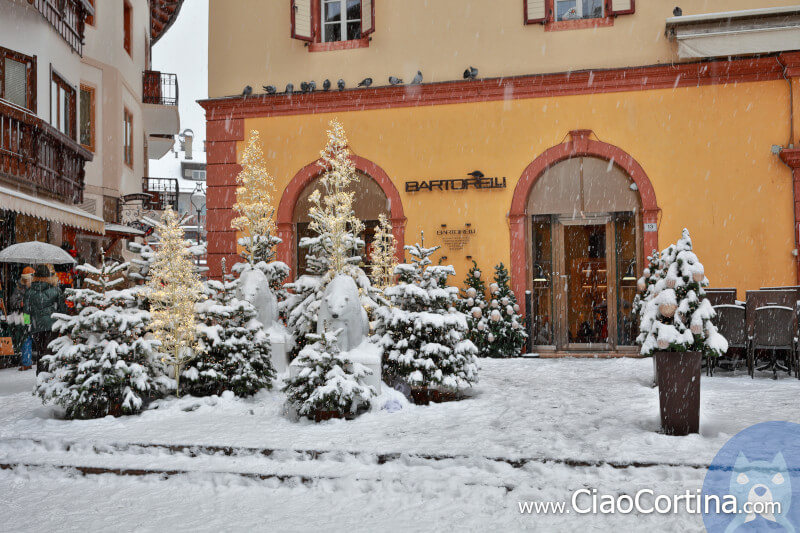
If you are looking for a place to have a drink or have fun, there are many alternatives: enoteca Baita Fraina, the Bar Sport and the Janbo are the most crowded places, but a cocktail before dinner at the Suite, under the bell tower, is probably the trendiest one.
If you want to learn more about where to go to drink in Cortina, we recommend our page, you can click it below:
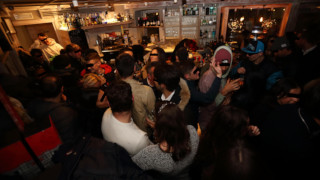
If, on the other hand, you got a little hungry, we also recommend reading our article on where to eat in Cortina d'Ampezzo for all budgets.
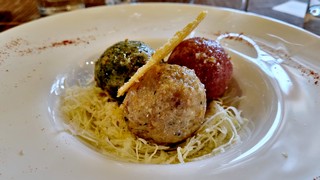
Although the center is where most of the shops are located, the best way to discover Cortina is to wander. Don't be afraid to enter some uncrowded street, having as a reference the bell tower it is practically impossible to get lost.
Next there are some examples of what you can find by moving a few steps away from Corso Italia: go back to the square of "Palazzo delle Poste". Continuing a few meters towards the bell tower you'll find another of the most popular aperitif places in Cortina: Villa Sandi. In a few minutes it is also possible to reach the Cortina station, in the vicinity of which you can find the excellent ice cream shop Da Po' and the former railroad walking road, where it is possible to walk south and north for kilometers, with a regular and gentle steep, perfect for not getting too tired.
Close to the station, every Tuesday and every Friday morning, there is the traditional town market, with stalls selling various types of products, from food to shoes. If you want a roast chicken, I suggest making a phone call to book.
Cortina is also a very quiet town, where it's extremely difficult to have any problem, even in the less crowded streets nobody will bother you.
Conclusion
We hope you liked this page on what to see in Corso Italia in Cortina. Before saying goodbye, we would suggest you read our home page, with all the articles we wrote about Cortina d'Ampezzo.
If you want to thank us you can read the page Support us. If you only want to suggest a change, propose something or just say hello, in the section contacts and info you'll find all the ways to reach us.